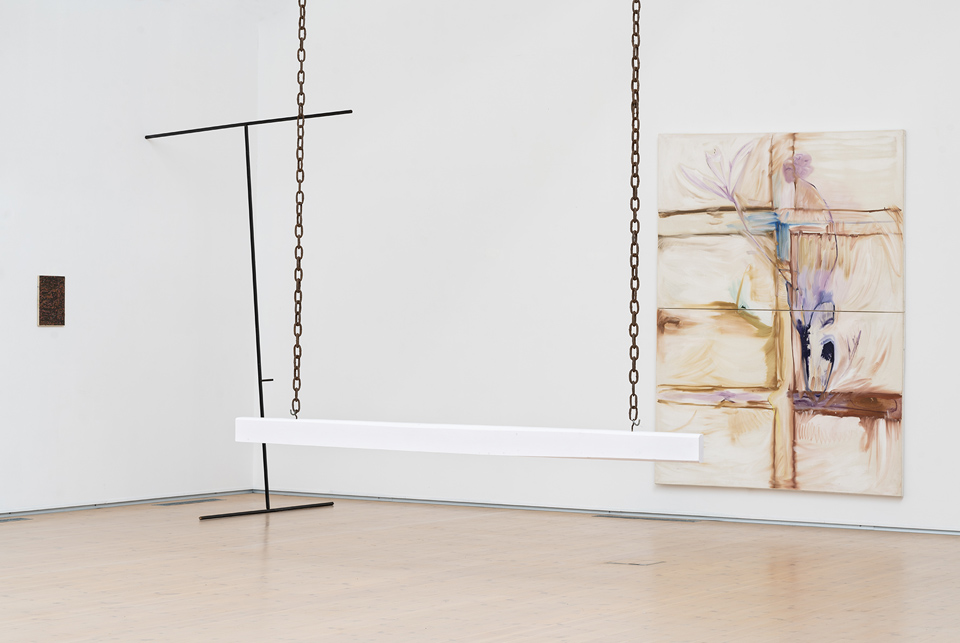Magni Moss is a painter who begins each painting as if for the very first time, and still we could say that he always ends up in the same place. For even in such a disappearing act, practice makes perfect: Moss has become very good at starting over. In his work, we can see how the identity of one thing is produced by its difference from another. And how sameness might just live in the cracks between difference.
The philosophy of Ludwig Wittgenstein asks us first to keep in mind that 'things are as they are', and then to seek 'illuminating comparisons' in order to understand how they are. In isolation, Wittgenstein argued, language is absurd. Applied to Moss's paintings, each clearly is what it is – not an imitation or a representation, but simply itself – and yet what that means only starts to become clear when we ask how it is; that is, when we compare it to the other possibilities that exist in his universe. Equally, the objects that Moss has placed in the gallery function, not so much as sculptures, but as framing devices for the paintings that form part of how they signify. Perhaps the physical manifestation of comparison is a change of perspective.
The notion of style depends on making a distinction between matter and manner. But in Moss's paintings, vague stylistic references to, say, modernist abstraction or ancient Roman portraiture, appear only long enough to register as subject, not form. In other words, by always beginning again, he allows his paintings to remain in a kind of nascent state, a primordial soup, where the distinction between being and language is not yet quite possible. This is a method of escaping identity by keeping on the move: a phenomenological drama well worth paying attention to.
Kristian Vistrup Madsen 2023















